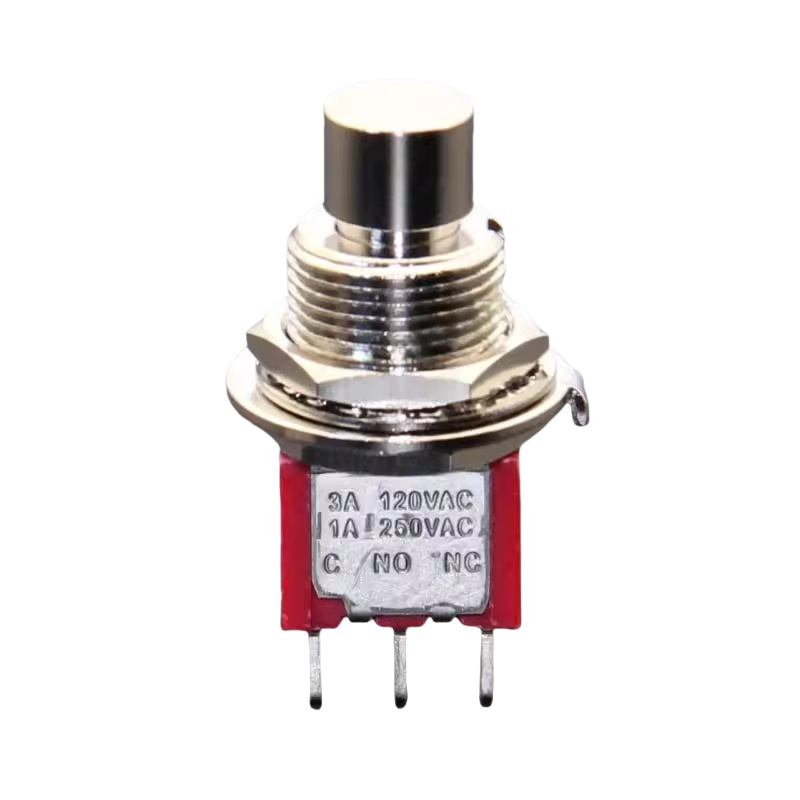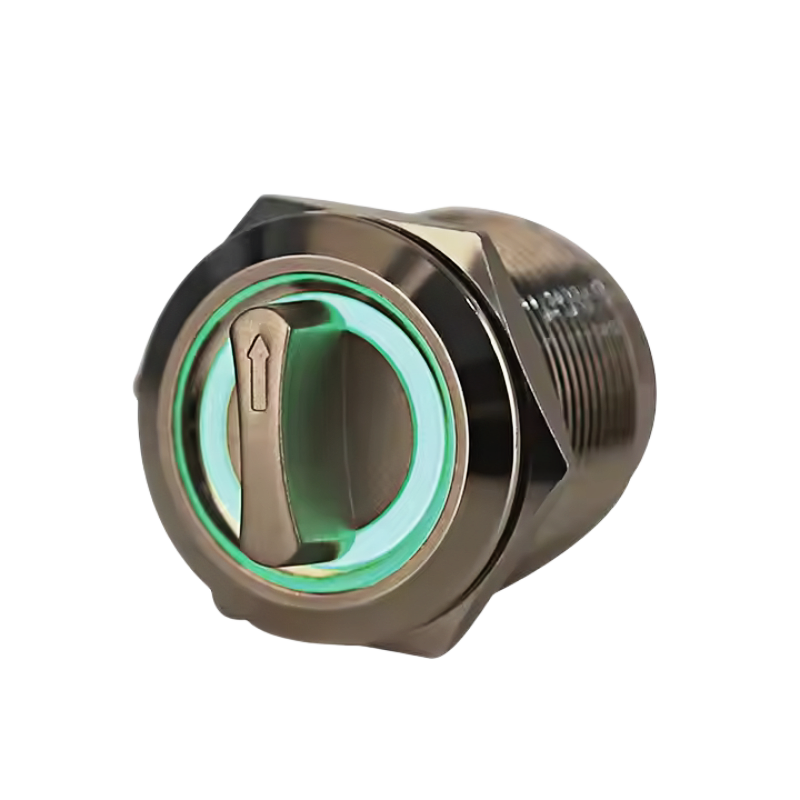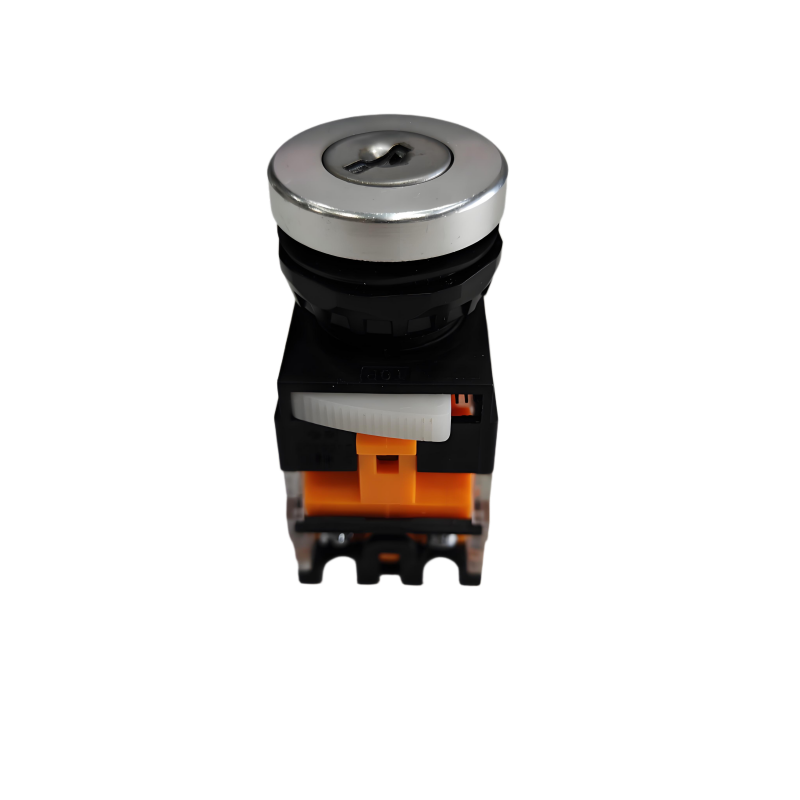In the intricate dance of modern industry, where volatile substances, combustible dusts, and flammable gases are often essential participants, safety isn’t just a priority – it’s the absolute foundation. A single spark, an unexpected arc, or excessive heat in the wrong location can trigger catastrophic consequences: equipment destruction, costly downtime, environmental damage, and, most tragically, loss of life. It is within these high-stakes environments that explosion-proof (Ex) switches move from being mere components to indispensable guardians of operational integrity and personnel safety. Understanding their application is crucial for any business operating in or serving hazardous locations.

Understanding the Battleground: Hazardous Areas
Before delving into the switches themselves, we must define the environment they protect. Hazardous areas are classified based on the type of hazard (gas, vapour, mist, or dust), the likelihood of a hazardous atmosphere being present, and its persistence. Globally recognized systems include:
IECEx / ATEX (Zones):
Zone 0 / 20: Explosive atmosphere (gas/dust) present continuously or for long periods.
Zone 1 / 21: Explosive atmosphere likely to occur in normal operation occasionally.
Zone 2 / 22: Explosive atmosphere not likely in normal operation and, if it occurs, will persist only for a short time.
NEC (Classes/Divisions – North America):
Class I: Flammable gases or vapours (Divisions 1 & 2 based on hazard frequency).
Class II: Combustible dusts (Divisions 1 & 2).
Class III: Ignitable fibres or flyings (Divisions 1 & 2).
Equipment designed for use in these areas, like explosion-proof switches, must be certified for the specific Zone or Division/Class and Group (defining the exact gas/dust type) and Temperature Class (defining maximum surface temperature).
What Makes a Switch “Explosion-Proof”?
Contrary to a common misconception, “explosion-proof” does not mean the device is immune to an internal explosion. Instead, it signifies an ingenious containment strategy. These switches are engineered with exceptionally robust housings, typically crafted from durable materials like brass, stainless steel, or high-strength aluminium alloys. The core principles are:
Containment: If an explosive mixture enters the enclosure and is ignited by an internal spark or hot component, the heavy-duty housing is designed to withstand the resulting pressure blast without rupturing.
Flame Path Cooling: Critical to the design are precisely machined flame paths (or flame-arresting joints) – the gaps between mating surfaces like the housing and its lid, or conduit entries. As the exploding gases exit the enclosure through these narrow paths, they are rapidly cooled below the ignition temperature of the external hazardous atmosphere, preventing the explosion from propagating outside the enclosure.
Heat Dissipation: Materials and designs ensure that the external surface temperature of the switch, even under fault conditions or high ambient temperatures, never reaches the auto-ignition point (AIT) of the surrounding gas or dust cloud. This is defined by the Temperature Class (T1 to T6, with T6 being the coolest).
Ingress Protection (IP): High IP ratings (e.g., IP66, IP67) ensure the enclosure is sealed against dust and water ingress, preventing contaminants from interfering with operation or creating internal hazards.
Spark Prevention: Internal components are designed and arranged to minimize sparking during operation. When sparks are unavoidable (e.g., in a switch breaking a circuit), they are contained within the explosion-proof enclosure.
Key Applications Across Critical Industries
Explosion-proof switches are not a one-size-fits-all solution; they come in various forms (toggle, push-button, rotary, selector, limit switches) tailored to specific functions. Their application spans industries where safety is paramount:
Oil & Gas (Upstream, Midstream, Downstream):
Drilling Rigs: Controlling mud pumps, drawworks, top drives, and ventilation systems on platforms and land rigs where methane and hydrocarbons are pervasive.
Refineries & Petrochemical Plants: Operating pumps for crude oil, gasoline, naphtha, solvents; controlling valves in fractionation units, reactors, and storage tank farms (Zone 1/Class I Div 1). Emergency shutdown (ESD) systems heavily rely on Ex-rated push buttons.
Pipeline Stations (Pumping/Compression): Starting/stopping large pumps and compressors handling natural gas or liquids. Control panels for valve actuators and monitoring systems located within hazardous zones require Ex switches.
Offshore Platforms: Virtually all electrical control in production areas, wellheads, and process modules demands explosion-proof components due to constant exposure to hydrocarbons.
Chemical & Pharmaceutical Manufacturing:
Batch Reactors & Mixing Vessels: Controlling agitator motors, charging pumps for flammable solvents, and heating/cooling systems.
Solvent Handling Areas: Operating transfer pumps, drum filling stations, and ventilation controls in areas processing acetone, alcohols, toluene, etc.
Spray Drying & Milling: Controlling equipment handling combustible powders and solvents (Zone 22/Class II Div 2, potentially Zone 21/Class II Div 1 during cleaning or upset conditions).
API Synthesis: Switches for equipment in processes involving pyrophoric materials or flammable intermediates.
Mining (Coal & Hard Rock):
Underground Coal Mines: Methane (firedamp) and coal dust create a highly explosive atmosphere (Zone 0/1). Ex switches are mandatory for controlling conveyor belts, ventilation fans (critical!), pumps, cutter heads, and lighting circuits.
Processing Plants: Controlling crushers, mills, and flotation cells where combustible mineral dusts (e.g., sulphides) are generated (Zone 21/22).
Grain Handling & Food Processing:
Elevators, Silos & Mills: Controlling bucket elevators, conveyors, grinders, and fans where combustible grain, sugar, flour, or starch dust clouds pose a significant explosion risk (Zone 20/21/22, Class II). Ex-rated limit switches monitor position on hatches or equipment.
Wastewater Treatment & Biogas:
Digester Tanks & Gas Handling Areas: Controlling mixers, pumps, and compressors handling biogas (methane-rich). Areas around digesters and gas storage often require Zone 1/Class I Div 1 equipment.
Pump Stations: Especially those handling sewage or industrial effluent where flammable gases (e.g., hydrogen sulphide, methane) can accumulate.
Paints, Coatings & Adhesives:
Spray Booths & Mixing Rooms: Controlling ventilation, conveyor movement, and pump systems where solvent vapours from paints, inks, and adhesives create hazardous atmospheres.
Aerospace & Defence:
Fueling Operations & Hangers: Control of fuel pumps, ventilation, and ground support equipment near aircraft where jet fuel vapours are present.
Propellant & Munitions Manufacturing: Handling highly sensitive explosives demands the utmost safety in electrical control components.
Beyond the Basic Toggle: Types and Functions
Push Button Stations (Start/Stop/Emergency Stop): The most common sight. Robust mushroom-head E-Stop buttons are critical safety interfaces. Colour-coded (e.g., red for stop, green for start) for clear identification. Used for motor control, process initiation/termination, and critical emergency shutdowns.
Selector Switches: Allow operators to choose between different modes of operation (e.g., Hand-Off-Auto, Open-Close for valves). Provide clear, positive positioning.
Toggle Switches: Used for simpler on/off functions or circuit selection where space permits. Offer tactile feedback.
Limit Switches: Detect the position or movement of machinery (e.g., valve open/closed, conveyor end position, door/hatch status). Provide critical feedback for automated sequences and safety interlocks.
Cam Operated Switches: Used in motor control centres or complex control panels for sequencing multiple circuits. Often incorporate multiple contacts for control and signalling.
Control Stations: Combine multiple functions (e.g., push buttons, selector switches, pilot lights) into a single explosion-proof enclosure for centralized control.
Selecting the Right Explosion-Proof Switch: Critical Considerations
Choosing an Ex switch isn’t merely about finding a robust enclosure. It requires meticulous matching to the specific hazard:
Hazardous Area Classification: The absolute starting point. Identify the Zone/Division, Group (gas type – e.g., IIC for hydrogen, IIB for ethylene, IIA for propane; dust groups), and required Temperature Class (T-rating). The switch certification must match or exceed these requirements.
Electrical Ratings: Ensure the switch contacts can handle the required voltage (e.g., 120VAC, 24VDC, 480VAC) and current (amperage) for the load it controls (motors, solenoids, lighting). Consider inrush currents for motors.
Functionality & Type: What action is needed? Simple on/off, start/stop, mode selection, position feedback? Choose the appropriate switch type (push button, toggle, selector, limit).
Environmental Durability: Beyond explosion protection, consider corrosion resistance (marine, chemical exposure – stainless steel may be needed), extreme temperatures, UV resistance (for outdoor use), and required IP rating for dust/water ingress. Impact resistance (IK rating) can also be important.
Mechanical Requirements: Number of poles/contacts needed, actuator style (mushroom head, guarded, key-operated for safety), mounting type (conduit, flange, panel), and required operator force.
Certification Marks: Look for valid, recognized certification marks relevant to the region of operation (e.g., ATEX, IECEx, UL Listed for Class/Div, CSA, UKCA). Never use uncertified equipment in hazardous locations.
Maintainability & Access: Consider ease of access for maintenance, contact replacement, or wiring. Modular designs can be advantageous.
Installation and Maintenance: Ensuring Ongoing Safety
Even the best switch is only as safe as its installation and upkeep:
Qualified Personnel: Installation, inspection, and maintenance must be performed by personnel trained and competent in working with hazardous area equipment and relevant electrical codes (e.g., NEC, IEC 60079-14).
Correct Wiring & Sealing: Use approved explosion-proof conduit and cable glands. Properly seal conduit systems using approved methods (e.g., compound seals) to prevent gas migration between enclosures or from hazardous to non-hazardous areas. Follow torque specifications meticulously on cable glands and enclosure bolts.
Regular Inspection: Implement a rigorous inspection schedule. Check for:
Physical damage to enclosures, lenses, or actuators.
Corrosion compromising enclosure integrity or flame paths.
Tightness of bolts, conduit connections, and cable glands.
Proper operation and clear labeling.
Integrity of seals (where applicable).
Preventive Maintenance: Clean external surfaces to prevent dust accumulation (which can insulate and cause overheating). Lubricate moving parts only with manufacturer-approved lubricants. Internally inspect contacts for wear, pitting, or carbon buildup according to manufacturer intervals and procedures. Replace worn components promptly with certified parts.
Record Keeping: Maintain detailed records of installations, inspections, maintenance performed, and any modifications.


